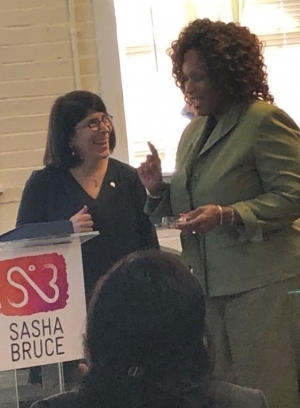The National Runaway Safeline, the Family and Youth Services Bureau, and RHY Leaders Mark NRPM 2019!
Body
On November 6, 2019, national and local stakeholders for runaway and homeless youth (RHY) gathered at Sasha Bruce Youthwork in Washington, D.C., to kick off National Runaway Prevention Month (NRPM) and celebrate the 45th anniversary of the Runaway and Homeless Youth Act. Organized by the National Runaway Safeline (NRS), the National Network for Youth (NN4Y), and Sasha Bruce Youthwork, in coordination with the Family and Youth Services Bureau (FYSB), the program was an opportunity to learn more about the critical services provided and hear the real-world experiences of two young women who benefited from RHY’s services.
One speaker, age 28, had spent years in Sasha Bruce’s Independent Living Program and is now a social worker. Another speaker, a 21-year-old graduate student at Howard University, is currently a program participant. Both credited RHY-centered programs and spoke of their desire to give back to young people who need help as they did.
Elizabeth Darling, Commissioner for the Administration for Children, Youth, and Families (ACYF) provided opening remarks at the NRPM event. Commissioner Darling emphasized the importance of working across sectors to support youth experiencing homelessness in local communities. She also expressed her commitment to continue working to support vulnerable children, youth, and families across the country.
During the event, NRS Chief Executive Officer Susan Frankel presented an award to Debbie Powell, FYSB Deputy Associate Commissioner, “in recognition of [her] support and unwavering commitment to runaway and homeless youth.” Accepting the award, Ms. Powell eloquently described the critical importance of the services provided by RHY grantees and other youth serving organizations, as well as the positive impact of caring adults in the lives of youth. Ms. Powell has dedicated her career to support vulnerable youth and families.
Every November, NRPM “Shines a Light” on the experiences of runaway and homeless youth that too often remain invisible. It is also an opportunity to spotlight prevention efforts and resources available to support youth in crisis throughout the U.S.
